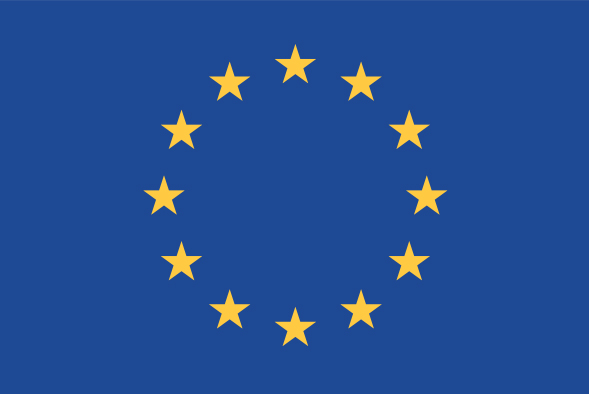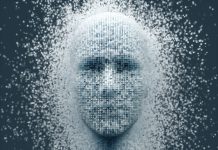Elina Kilpi-Jakonen, Assistant professor and Scientific programme co-ordinator at the University of Turku, explores how intergenerational social origins and inequalities can shape our lives
Family background influences our lives in multiple ways: from genes to work-life connections, the role that parents can play in their children’s lives is almost ubiquitous. Yet these relationships are far from deterministic. Institutional contexts shape the strength and manner in which the influences take place. Even the way that genes shape our lives depends on the environment in which we live.
The Dynamics of Inequality Across the Life-course: structures and processes (DIAL) research programme has studied the intergenerational transmission of social inequality extensively, covering the key stages of the life-course, as well as further conceptualising what equality of opportunity – and other key concepts for studies on intergenerational social mobility – is and how it can be measured.
Different approaches to the study of intergenerational inequality
A number of DIAL projects have made an effort to improve our understanding of what exactly intergenerational inequality is and how it can be approached from different – though interrelated – points of view. One of the projects to tackle this issue is the Populism, Inequality and Institutions (PII) project, which sets out four different approaches (Björklund & Jäntti 2020). These are intergenerational mobility, intergenerational effects, sibling correlations, and equality of opportunity.
Intergenerational mobility estimates tend to be the most widely known and refer to the association between parents and their children’s social position, e.g., in terms of education, social class, or income. In estimating intergenerational effects, scholars attempt to establish the causal nature of these associations, which would then give us answers to questions such as how much more education would we expect children to obtain if their parents received one more year of education. Sibling correlations take a broader approach and estimate how much family background more broadly – not just in terms of measurable resources – accounts for differences (inequalities) in socioeconomic outcomes. Finally, the equality of opportunity approach addresses these questions from a more normative perspective and attempts to discern how much circumstances, which are beyond the individual’s control and can include family factors that are shared and those that aren’t between siblings, influence socioeconomic outcomes. A better understanding of these factors can also help us to develop policies and interventions to reduce intergenerational inequality.
The concept of equality of opportunity is further examined in research within the Impact of childhood circumstances on individual outcomes over the life-course (IMCHILD) project, where researchers have analysed it together with freedom from poverty (Hufe et al. 2018). They put forward a new measure of unfair inequality, where both of these concepts receive equal weight. In other words, the researchers argue that from a fairness perspective it is important that socio-economic outcomes do not depend on childhood circumstances (equality of opportunity) and that income distributions are such that everyone can make ends meet (freedom from poverty). The research results suggest that within Europe unfair inequality is most prevalent in Lithuania, Italy, and Romania, and income distributions are the fairest in the Netherlands, Finland, and Norway.
Genes and the environments in which we live
A key area of research that has developed with great strides over the past decades is the study of genetic influences on our socioeconomic as well as health outcomes. This area of research is the focus of the Gene-Environment Interplay in the Generation of Health and Education Inequalities (GEIGHEI) project. At the heart of this research project is the examination of how the influence of genes depends on the environment, which can either enhance or suppress their influence on individuals’ outcomes. In terms of intergenerational socioeconomic re-production, the research shows that a genetic predisposition for high educational attainment is more beneficial when parents are able to invest in their children to a greater extent (Muslimova et al. 2021). Or vice versa, parental investments are more effective when children also have a higher genetic predisposition for education.
These results are echoed by research undertaken in the Inequality, early adult life courses and economic outcomes at mid-life in comparative context (EQUALLIVES) project, where the results imply that the influence of genes is greater for children growing up in the most advantaged families (Erola et al. 2021). In other words, the ability to take advantage of a more beneficial genetic predisposition for socioeconomic success is greater for children with parents who have high levels of resources. This may be due to these parents having the possibility and willingness to invest in their children differentially depending on their talents, whereas less advantaged parents are constrained or unwilling to do so. The research also suggests that the role of genes is substantially larger for educational and occupational attainment than for income, at least in the context of Finland.
Influences across the life-course
It is likely to come as no surprise that the influence of parents is great when children are small, after all a large majority of children’s time is usually spent with their parents. Research from the Trends in Inequality: Sources and Policy (TRISP) project indicate that time investments made by parents early in childhood as well as investments into better quality schools are a major explanatory factor for intergenerational income inequality in the UK (Bolt et al. 2021). These investments improve children’s cognitive skills and their educational attainment, which lead to higher incomes.
The influence of parents persists even as children go through the education system and enter into the labour market. This has been studied extensively in the Life-Course Dynamics of Educational Tracking (LIFETRACK) project, where a key area of focus has been the way in which social origin and educational tracking work together to produce inequalities in the labour market careers. As also suggested by previous research, even after taking into account educational attainment, social origins continue to exert an influence on labour market achievement (e.g., Heiskala et al. 2021; Herbaut et al. 2021). Research from the EQUALLIVES project also highlights how family background influences not only the final socioeconomic outcomes that individuals reach but also the ways in which they do so (Karhula et al. 2019).
Therefore, in attempting to tackle intergenerational inequality, there is a need to look at influences beyond childhood and address the ways in which advantaged parents continue to support their children in adulthood.
References
- Björklund, A, and Jäntti, M, 2020, Intergenerational mobility, intergenerational effects, sibling correlations, and equality of opportunity: A comparison of four approaches, Research in Social Stratification and Mobility, 70, 100455.
- Bolt, U, French, E, Hentall MacCuish, J, and O’Dea, C, 2021, The Intergenerational Elasticity of Earnings: Exploring the Mechanisms, DIAL Working Papers 11/2021.
- Erola, J, Lehti, H, Baier, T, and Karhula, A, 2021, Socioeconomic Background and Gene–Environment Interplay in Social Stratification across the Early Life Course, European Sociological Review, jcab026 (advance access).
- Heiskala, L, Erola, J, and McMullin, P, 2021, Formal differentiation at upper secondary education in Finland: subject-level choices and stratified pathways to socio-economic status and unemployment, Longitudinal and Life Course Studies, 12, 323–343.
- Herbaut, E, Barone, C, Ichou, M, and Vallet, L, 2021, Social origins, track choices and labour-market outcomes: evidence from the French case, Longitudinal and Life Course Studies, 12, 345–388.
- Hufe, P, Kanbur, R, and Peichl, A, 2018, Measuring Unfair Inequality: Reconciling Equality of Opportunity and Freedom from Poverty, DIAL Working Papers 1/2018.
- Karhula, A, Erola, J, Raab, M, and Fasang, A, 2019, Destination as a process: Sibling similarity in early socioeconomic trajectories, Advances in Life Course Research, 40, 85–98.
- Muslimova, D, van Kippersluis, H, Rietveld, CA, von Hinke, S, and Meddens, SFW, 2021, Dynamic complementarity in skill production: Evidence from genetic endowments and birth order, DIAL Working Papers 1/2021.

Dynamics of Inequality Across the Life-course: Structures and Processes has received funding from the European Union’s HORIZON 2020 Research programme under the Grant Agreement no. 724363.
Please note: This is a commercial profile











